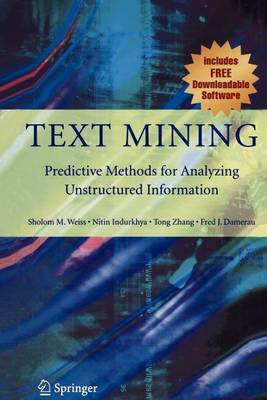Data mining is a mature technology. The prediction problem, looking for predictive patterns in data, has been widely studied. Strong me- ods are available to the practitioner. These methods process structured numerical information, where uniform measurements are taken over a sample of data. Text is often described as unstructured information. So, it would seem, text and numerical data are different, requiring different methods. Or are they? In our view, a prediction problem can be solved by the same methods, whether the data are structured - merical measurements or unstructured text. Text and documents can be transformed into measured values, such as the presence or absence of words, and the same methods that have proven successful for pred- tive data mining can be applied to text. Yet, there are key differences. Evaluation techniques must be adapted to the chronological order of publication and to alternative measures of error. Because the data are documents, more specialized analytical methods may be preferred for text. Moreover, the methods must be modi?ed to accommodate very high dimensions: tens of thousands of words and documents. Still, the central themes are similar.
- ISBN10 0387571833
- ISBN13 9780387571836
- Publish Date 2 September 2008 (first published 25 October 2004)
- Publish Status Withdrawn
- Out of Print 18 October 2014
- Publish Country DE
- Imprint Springer
- Format Paperback (US Trade)
- Pages 264
- Language English
